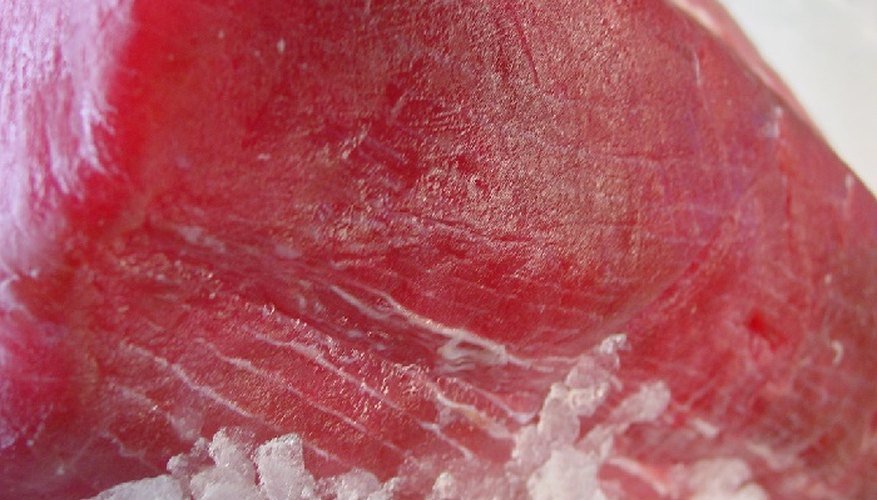Freezing fresh tuna is not like freezing just any food. Fresh tuna must be frozen carefully to avoid freezer burn. Tuna that is not properly frozen can develop a foul taste and smell, and can also carry disease and cause illness. Taking the time to properly freeze tuna will result in fish that is free of bacteria and cooks properly when thawed.
- Freezing fresh tuna is not like freezing just any food.
- Taking the time to properly freeze tuna will result in fish that is free of bacteria and cooks properly when thawed.
Prepare a solution of salt and water. The salt will prevent moisture from leaving the fresh tuna. It will also help the tuna stay firm.
Dip the tuna in the salt water solution for one minute.
Wrap the tuna in cling film.
Place the tuna in a resealable freezer bag. Before closing the bag, ensure you press all the air out of the bag.
Place the tuna in the coldest part of your freezer. Keep the fish frozen for up to three months.
TIP
Select the freshest tuna for freezing.
For best results, do not refreeze tuna.
Another way to freeze your tuna is to freeze it in a block of ice. Fill a pan with water and place your tuna in the water, then place the pan in the freezer. Once the water is frozen, remove the block of ice from the pan. Wrap the block of ice with moisture-proof packaging.
WARNING
Defrost frozen tuna in your refrigerator to avoid contamination or spoilage. Do not defrost frozen tuna at room temperature, in a microwave or under hot water.
